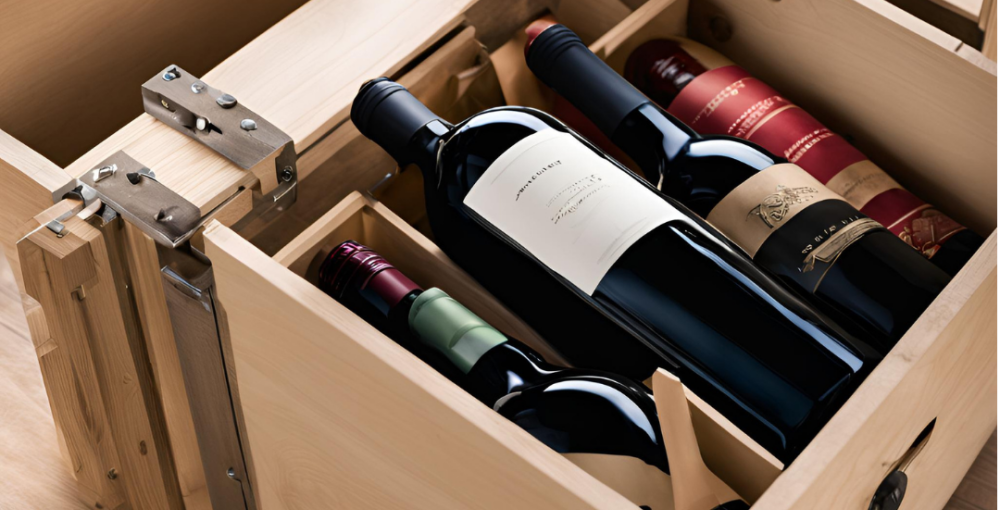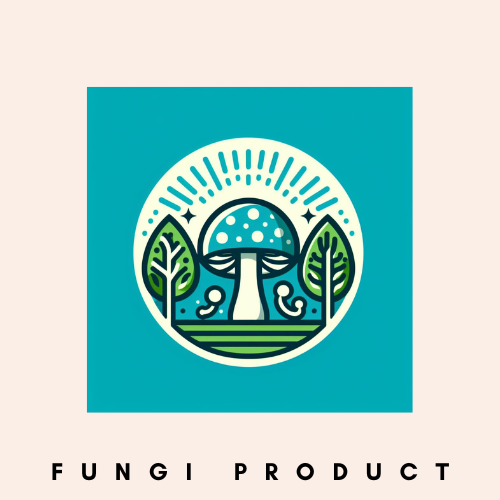Imagine a world where your packaging doesn’t end up in a landfill but naturally decomposes, leaving no trace behind. Thanks to innovative uses of fungi, this future is closer than ever. Discover how mycelium, the root structure of mushrooms, is transforming the packaging industry with eco-friendly solutions that rival traditional materials. Dive into the fascinating process where nature meets technology to create sustainable, biodegradable alternatives.
Understanding Fungi as a Packaging Material
You may know fungi as the mushrooms in your salad or the mold on old bread, but their role extends far beyond these familiar occurrences. These organisms thrive in diverse environments ranging from arid deserts to lush forests, displaying remarkable properties that scientists and engineers are now harnessing for packaging solutions.
Fungi consist of a network of mycelium, a thread-like structure that forms the root system of mushrooms. Mycelium grows rapidly, feeding on agricultural waste and other organic materials. It’s this growth process that holds immense potential for eco-friendly production, as mycelium binds these waste materials together, forming a sturdy yet biodegradable composite.
When considering the practical features of fungi for packaging, its natural attributes are impressive. Mycelium, for example, acts as a natural adhesive, binding agricultural waste materials like straw or sawdust into sturdy, lightweight forms. It’s not only biodegradable but also customizable, allowing for tailored shapes and thicknesses to fit specific packaging needs. Fungi-based packaging is also heat and water-resistant, making it a viable alternative for various industries, from food to electronics. Moreover, it requires minimal energy to produce, contributing significantly to reducing the carbon footprint compared to plastic-based materials.
Fungi-based materials offer durability and insulation comparable to synthetic foams, such as polystyrene, but with the crucial advantage of being made from renewable resources. Not only is the material strong, it’s also lightweight, which can mean reduced shipping costs and lower carbon footprints.
In the realm of biodegradable options, fungi packaging stands out. It doesn’t just break down more efficiently than many bioplastics—some of which require specific conditions to degrade—it also enriches the soil as it decomposes. This aspect of fungi packaging demonstrates its potential as a closed-loop, waste-free solution in our pursuit of sustainable materials.

synthetic foams, such as polystyrene, are better to disappear
The Biodegradation Process of Fungi Packaging
When I consider the vast amount of packaging waste that accumulates worldwide, it’s encouraging to note the role fungi-based materials can play in addressing this issue.
Unlike conventional plastics, which linger in the environment for centuries, fungi packaging is designed with the end in mind – biodegradation.
Composed primarily of mycelium – the root structure of fungi – and organic waste, such as agricultural byproducts, this innovative packaging breaks down into harmless, nutrient-rich compost. This occurs when the material is exposed to the right conditions of moisture and microorganisms. It’s a stark contrast to plastics that fragment into microplastics, constituting a persistent environmental hazard.
The real beauty lies in fungi packaging’s capacity to decompose in mere weeks rather than years. This biodegradation is a natural process, needing no industrial facilities to break it down, unlike many other eco-friendly contenders that require specific conditions. Moreover, during decomposition, fungi packaging doesn’t release toxic substances, thereby safeguarding soil and water quality.
What sets fungi-based materials apart in waste management is their adaptability and low impact on ecosystems. The mycelium network can be grown into virtually any shape and size, mimicking traditional packaging forms while minimizing production waste. Furthermore, used packaging can confidently be introduced to compost heaps or even garden soil, contributing to the circular economy.
Understanding this decomposition process paints a positive picture. Yet, the journey from laboratory to logistics involves countless steps to ensure what’s feasible on a small scale can be replicated larger.
The next section will explore how these eco-innovations translate from concept to production-ready solutions, highlighting the pioneers spearheading this movement and the practical challenges they face.
Developing Fungi Packaging: From Concept to Production
The quest to replace traditional packaging with eco-friendly alternatives has led innovators to explore the realm of mycology, the study of fungi. Mycologists work alongside engineers and designers to harness the incredible potential of mushrooms for creating sustainable packaging solutions.
At the forefront of this innovation are companies like Ecovative Design, which have perfected the art of growing myco-materials. I’ll take you through the fascinating process these pioneers employ to turn fungi into a durable, compostable packaging option.
It starts with selecting the right species of mushroom. Researchers look for fungi with a robust mycelium network, which is like the root structure of mushrooms. The mycelium is what will eventually form the basis of the packaging material.
Once the species is selected, the mycelium is grown in a controlled environment on a diet of agricultural byproducts. This is a win-win because it not only provides nourishment for the fungi but also repurposes waste from farming.
The growth process is precisely timed, and once the mycelium has bound the agricultural substrates together, it’s harvested. Harvesting at the right time is crucial to ensure the material has the desired properties, like strength and durability.
After being harvested, the mycelial mat is dried to stop growth. Then, it’s ready to be molded. This transformative step involves shaping the mycelium into specific forms designed for various products.
The final molded product is then baked to further solidify the material, rendering it inert. The result is a lightweight, shock-resistant packaging material that stands as a testament to what can be achieved through innovation and an understanding of nature.
But it’s not all a walk in the park. Companies face challenges, primarily in scaling production to meet the needs of larger consumer bases. Digital fabrication technologies like 3D printing are being explored to overcome these hurdles and expand manufacturing capabilities.
I will detail how this ground-breaking material is changing industries and the adoption rate among consumers in the next section. Moreover, I’ll discuss the environmental benefits that have prompted certain industries to make the switch to fungi packaging.
The Impact of Fungi Packaging on Industries and Consumers
It’s not merely a trend; the adoption of fungi packaging marks a significant shift in how industries and consumers approach product packaging. Sustainable packaging is rapidly becoming a benchmark for responsible business practices, and fungi-based options are integral to this evolution. In this section, I explore the real-world effects of transitioning to fungi packaging, focusing on various industry experiences and consumer responses.
Recounting success stories, several innovative companies have started integrating fungi packaging for their products. These businesses, often at the forefront of their industries, have reported not only environmental benefits but also positive feedback from customers who value sustainability. Whether it’s for electronics, cosmetics, or food products, my discussion here on case studies will showcase the versatility and acceptance of fungi-derived packaging.
Consumer demand for eco-friendly products is climbing, and with it, the expectation for sustainable packaging. Surveys indicate a growing number of consumers are willing to pay a premium for products wrapped in green packaging. This shift isn’t just ‘telling’, it’s a loud message to industries that neglecting sustainability may well cost customer loyalty in the long run.
Despite the enthusiasm, the widespread adoption of fungi packaging faces regulatory hurdles. My analysis here includes a breakdown of the certifications currently required for sustainable packaging. Companies must navigate this regulatory landscape to ensure their fungi packaging complies with international standards and local regulations.
Given that sustainable practices can tip the scales in purchasing decisions, the conversation ends with a persuasive call to action, urging businesses to consider fungi packaging as a strategic move. It’s not a mere advantage, rather becoming an imperative. And while companies play a significant role, consumers drive change through their purchasing power. As individuals become more conscientious, their choices magnify
the collective impact on the packaging industry.

cardboard can be replaced by fungi to make wine bottle separators
Future Perspectives and Innovations in Fungi-Based Packaging
As I round off this exploration of fungi-based packaging, it’s clear that its roots run deep in the promise of sustainability. Innovations continue to sprout in this field, signaling a potential revolution across various industries. The journey of eco-friendly packaging doesn’t end here.
It is an evolving narrative of human ingenuity meeting environmental stewardship.
Research is perpetually pushing the boundaries of how fungi can be used, not just in packaging, but as an eco-conscious material in other applications. Imagine a world where the buildings we live in, the furniture we use, and even the clothes we wear might one day benefit from the sustainability offered by fungi.
The potential of fungi packaging to impact our planet is immense. By embracing these organic solutions, industries can significantly reduce their environmental footprint. This commitment to sustainability is a trend and will become a critical investment in our collective future.
Consumers have a powerful role to play too. Demand for sustainable products can drive change, encouraging more companies to consider eco-friendly alternatives like fungi packaging.
Your choice matters. By supporting businesses that invest in these green innovations, you become an integral part of the sustainability revolution.
Fungi-based packaging is still in its growth phase, and the seeds we plant today through research, development, and adoption have the potential to yield a greener tomorrow. Each step we take towards eco-friendly alternatives is a step towards a more sustainable and responsible world.

André Raymond
